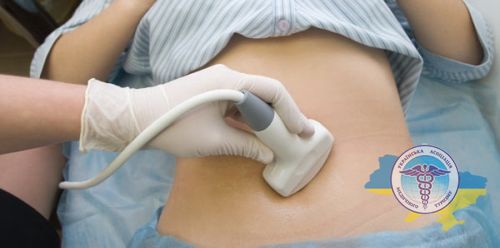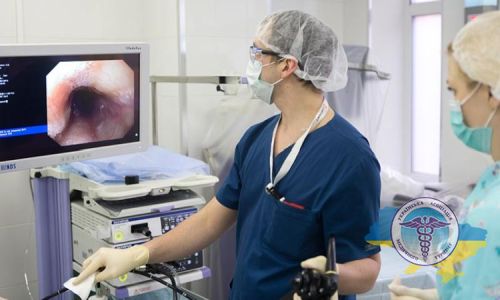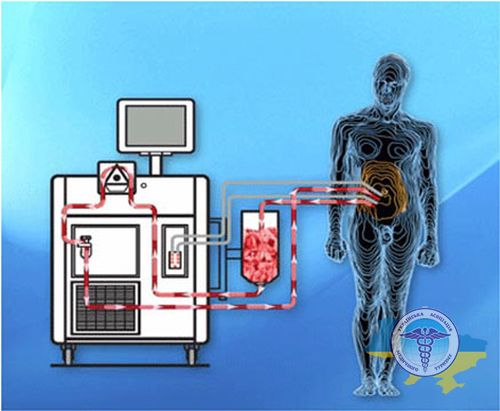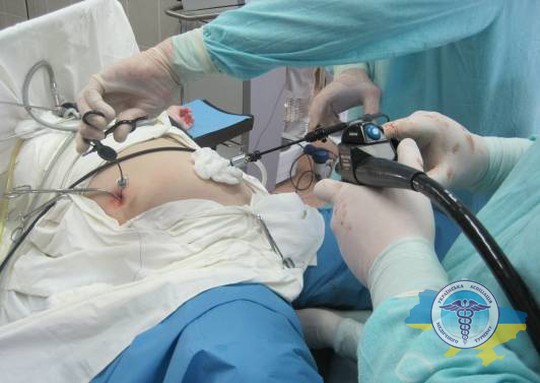Treatment of stomach cancer in clinics of Germany

Gastric cancer is a dangerous malignant formation that affects the epithelial cells of the mucous membrane of this organ. This is one of the most common cancer diseases, which has become “younger” in recent years - now the average age of patients does not reach 40 years. Moreover, men get sick approximately 1.7 times more often than representatives of the fair sex.
At risk are people suffering from chronic gastrointestinal diseases, smokers, alcohol abusers, as well as those for whom this disease is “inherited.” Treatment is complicated not only by diagnostic difficulties, but also by the rapid development of the tumor with metastases to neighboring organs of the gastrointestinal tract and other areas of the body.
Germany is firmly entrenched in the list of leaders in the field of oncology treatment. German oncologists show the highest efficiency in treating this disease and have already helped thousands of foreign patients return to normal life!
The priority of German clinics in the treatment of stomach cancer in Germany is early diagnosis and clear localization of the lesion. Unfortunately, the problem is often detected in late stages, which makes treatment more difficult, less effective, and requires severe surgery to remove the organ. Therefore, it is important to seek help on time and undergo regular examinations.
Advantages of gastric oncology treatment in Germany
Germany is one of the leaders in the European Union in the development of medicine. It ranks honorably 2nd in terms of government funding for healthcare in the world, which allows it to purchase the latest equipment, conduct research and provide services to patients at the highest level.
In addition, treatment of stomach oncology in Germany has many other advantages:
- Treatment of foreigners is controlled by the state. Clinics receive permission to receive guests from other countries only if they meet high requirements for the qualifications of medical staff, equipment of wards and operating rooms, as well as the effectiveness of therapy.
- Innovative techniques. In addition to classical methods (surgery, chemotherapy, radiotherapy), modern developments are used - proton and gene therapy, HIPEC technique. The latter increases the 5-year survival rate for advanced peritoneal carcinomatosis by approximately 3 times.
- Specialized centers for the treatment of gastrointestinal tumors. Such medical institutions are equipped with the most modern equipment, and the qualifications of the personnel who work in them are confirmed by international certificates.
- Robotic surgery. Robot-assisted surgeries have become widespread in the country. Such devices enable surgeons to perform complex manipulations with the highest precision, minimizing the risk of injury to healthy tissue. This dramatically reduces the number of complications and speeds up rehabilitation.
- Qualified personnel. German centers employ oncologists with extensive experience. They regularly undergo internships in the world's leading clinics and are members of international associations.
- Minimally invasive operations. If the case is not advanced, they try to use gentle techniques, for example, endoscopic resection of the mucosa. This allows you to remove the tumor without opening the abdominal cavity and save most of the stomach, which significantly reduces the risk of complications.
- Relatively affordable prices. Compared to many developed countries, the cost of treatment for stomach cancer in Germany is more affordable. This is due to the high level of government funding for medicine and the presence of a regulated pricing system for medical services.

Want to know how much the treatment costs?
Answer a few questions and get preliminary information about the cost of diagnosis and treatment!
How is gastric cancer diagnosed in German clinics?

Thanks to careful diagnosis of stomach cancer in German clinics, patients have a higher chance of recovery. Even with a diagnosis established, German doctors recommend undergoing additional examination. This allows you to minimize the risk of error and select the optimal treatment regimen:
- Gastroscopy. It is carried out using a flexible endoscope. The device is inserted through the mouth and allows you to examine the gastric mucosa in detail, as well as identify the presence of a tumor. If a suspicious neoplasm is detected, you can evaluate its location, size, growth pattern (ulcerative form, polypoid).
- Biopsy. Taking pieces of tissue for subsequent histological examination, which is carried out during gastroscopy. In this case, several samples are taken from different areas at once. Analysis of biopsy samples provides critical information - it allows you to determine the exact type of tumor and its degree of malignancy.
- Histology. Microscopic analysis of the cellular structure of a tissue sample obtained from a biopsy. Provides critical information about the type of tumor and the presence of mutations, which makes the diagnosis more accurate.
- Immunohistochemistry. It complements standard histology and reveals tumor biological characteristics, gene and protein expression in cancer cells. Used to select targeted medications for the treatment of a specific patient.
- Ultrasound examination (ultrasound). Widely used to diagnose metastatic lesions of the abdominal organs, liver, lymph nodes, etc. Among the advantages of this type of research are safety and non-invasiveness, as well as the possibility of repeated use for condition monitoring.
- Computed tomography (CT). It makes it possible to localize a tumor with high accuracy and determine its size using multiple sections. CT with contrast is also often used, which significantly increases the information content of the study, allows you to identify metastases, etc.
- Laparoscopy. A special diagnostic procedure consisting of examining the abdominal organs using a video camera inserted through a small incision in the anterior abdominal wall. It makes it possible to clarify the prevalence of stomach cancer and damage to nearby organs, and to identify metastases in regional lymph nodes. Laparoscopy is often combined with laparoscopic ultrasonography to obtain a more accurate diagnosis.
- MRI of the abdominal cavity. Modern technology based on obtaining images of internal organs using a strong magnetic field. Compared to CT and ultrasound, MRI provides higher resolution images. Allows you to assess in detail the degree of damage to adjacent organs and identify metastatic lymph nodes in gastric cancer.
- PET/CT. Combines two advanced imaging methods - CT and positron emission tomography. CT provides precise anatomical localization of formations, and PET provides information about their functional activity.
- Blood tests for tumor markers. Biochemical tests that determine the concentration of specific substances produced by the tumor in the blood. The dynamics of tumor markers in the blood are monitored to assess the effectiveness of therapy and detect relapse.
- In German oncology clinics, patients have access to not only traditional treatment methods, but also the latest techniques (targeted therapy, immunotherapy, etc.). Their use in some cases can increase the survival rate of patients with stomach cancer, in some cases by 10-20%.
- Prices for therapy in Germany are regulated by the country's Ministry of Health under the G-DRG system. During the calculation, concomitant diseases, gender and age of the patient, the required volume of procedures, etc. are taken into account. Therefore, the cost of one procedure in different clinics cannot differ much. However, prices for additional non-medical services may vary depending on the specific medical center.
- From contacting UAMT to traveling to the clinic, it can take from 5 to 10 days. This time is necessary to translate documents into German, send them for review to the clinic and receive an invitation for treatment from it.
- When choosing an oncology clinic, pay attention to the level of equipment (the latest equipment allows you to make a more accurate diagnosis and simplify treatment). Another criterion is available treatment methods. Modern progressive methods give a chance for recovery to those who are not helped by traditional methods for a particular disease. For example, if a genetic mutation of a tumor is identified as a result of diagnostics, targeted therapy that can block the growth and division of malignant cells shows good results.
Methods of treatment of stomach cancer in German clinics

Benign tumors of the stomach can be most effectively cured in the early stages. If alarming symptoms appear, you should seek help from a doctor as soon as possible. To treat stomach cancer, clinics in Germany use both traditional methods and the latest innovations in the medical field.
Surgery
In German clinics, whenever possible, they try to preserve the organ during operations. Total removal of the stomach is used only when other methods of treatment are ineffective. If the tumor is operable and has not given distant metastases, then local excision is used.
Among the main techniques that are used:
- Endoscopic resection. Involves the use of flexible endoscopic instruments inserted through natural orifices of the body. This type of surgery includes endoscopic mucosal resection (EMR) and endoscopic submucosal dissection (ESD). These methods are used for small superficial stomach tumors detected at an early stage. Allows radical removal of the tumor, preserving the organ as much as possible.
- Laparoscopy. It involves performing an intervention through several punctures of the anterior abdominal wall using a video camera and special laparoscopic instruments. Due to small incisions, it allows you to radically remove the tumor, causing the least possible injury to the patient.
- Total gastrectomy. Complete removal of the stomach, performed through open or laparoscopic access. Indicated for common forms of cancer. In the process, an interintestinal anastomosis is formed, replacing the function of the removed organ.
Conservative treatment
When a patient seeks help at a late stage of the disease, surgical intervention must be supplemented with some conservative techniques to enhance the effect.
Chemotherapy
Recent medical research shows that stomach tumors are especially sensitive to the effects of chemicals. During chemotherapy, special drugs are introduced into the bloodstream that are aimed at destroying the tumor. German doctors have developed a special FLOT chemotherapy regimen, which today is the world standard of treatment for local forms of cancer.
Although a complete cure for stomach cancer is only possible through surgery, it has been proven that modern cytostatics effectively suppress the growth and division of cancer cells, reduce the size of the tumor, and also significantly increase the patient’s chances of recovery.
Chemotherapy used for non-malignant lesions of the stomach is:
- Neoadjuvant. It is carried out before surgical treatment to reduce the size of the tumor. The procedure allows you to convert inoperable forms of cancer into operable ones, increases the possibility of performing organ-conserving operations, and also increases relapse-free and overall survival.
- Adjuvant. Complements the effect of surgical intervention, reducing the risk of relapse and distant metastasis. Increases life expectancy, including by preventing relapses.
- Palliative. Used for metastatic or inoperable cancer. It is not aimed at cure, but at controlling symptoms and improving quality of life. Helps slow tumor growth and prevent complications. The technique prolongs the life of severely ill patients by an average of 6–14 months.
Radiation therapy
Radiation therapy is used in cases where surgery is impossible or there is no effect from chemotherapy. Radiotherapy is mainly carried out:
- Before surgery in combination with chemotherapy to reduce the size of the affected tissue;
- After surgery in order to reduce the risk of relapse;
- In advanced forms - to suppress the primary focus and metastases in order to alleviate symptoms and prolong life.
In Germany, high-precision linear accelerators are used for irradiation to minimize harm to healthy organs. Doctors select the dose and course of treatment on an individual basis.
Targeted therapy
This technique involves the targeted destruction of certain targets in cancer cells using special drugs. According to the recommendations of leading oncology societies, targeted therapy is indicated when identifying mutations in tumor cells responsible for uncontrolled growth and metastasis.
The most studied genetic markers in gastric cancer are HER2 and VEGF. It is these drugs that are targeted, in particular trastuzumab and lapatinib, as well as bevacizumab and ramucirumab.
In addition, clinical studies of other potential targets and corresponding targeted agents are underway. Their use will make it possible to identify additional biological subtypes of gastric cancer and optimize therapy.
Immunotherapy
Uses the capabilities of the immune system to fight tumor cells. It has a selective effect on cancer cells, so it has virtually no side effects.
Research shows the high effectiveness of immunotherapy in combination with chemotherapy. Thus, 20% of patients with gastric cancer have overexpression of HER2. Treatment with antibodies that block these receptors in German oncology centers shows very good results.
Palliative and symptomatic therapy
If radical treatment is not possible, palliative therapy is prescribed to relieve symptoms and improve quality of life. It includes surgical manipulations to restore the patency of the digestive tract, painkillers and antiemetics.
Innovative techniques
In Germany, the latest technologies are actively used to effectively treat tumors without surgery and aggressive systemic therapy.
Stereotactic radiosurgery
This method is based on high-precision irradiation of the tumor under the control of special robotic systems. It allows you to fight both primary tumors and a limited number of metastases.
The doctor calculates the dose and mode of radiation during stereotactic radiation therapy individually. In this case, it is usually possible to achieve a significant regression of the affected cells in several sessions.
HIPEC therapy

Another promising method is hyperthermia intraperitoneal chemotherapy (HIPEC). In case of a widespread process in the abdominal cavity, a heated solution of a chemotherapy drug is injected directly into the affected area.
High temperature enhances The overall effect of the procedure is enhanced by high temperature. HIPEC allows for regression in inoperable forms of the disease.
Proton therapy
Thanks to the equipment of German clinics with advanced equipment, in this country it is possible to use proton therapy, during which a beam of protons (charged particles) destroys a tumor.
This method offers many advantages. Among them:
- High accuracy (the impact is localized in the area of the neoplasm);
- Minimal irradiation of healthy tissue;
- Performed on an outpatient basis;
- Effectively destroys foci of pathology with a relatively small total radiation dose.
Gene therapy
During the development of cancer, mutations occur in genes that control important cellular functions: division, viability, metabolic activity, and so on.
During gene therapy, tumor cells are isolated from the patient's body, then in the laboratory they are genetically modified using vectors (usually viral) and reintroduced to the patient.
For example, in this way it is possible to insert genes encoding tumor necrosis factor, interferons and other proteins that help fight the disease. Or vice versa - inactivate oncogenes and genes involved in metastasis and resistance to therapy.
NOTES

NOTES (Natural Orifice Transluminal Endoscopic Surgery) technology is a laparoscopic operation through the natural openings of the body without any external incisions.
In case of cancer of the stomach, access is obtained through the navel - a closed opening from a conditionally sterile area through which the laparoscope and instruments are inserted. This allows you to minimize trauma, avoid scars and complications after incisions of the anterior abdominal wall.
What are the features of treatment in German clinics?
- Before starting cancer treatment in Germany, most medical institutions ask for a partial prepayment - the so-called deposit. This is necessary to guarantee a reservation of a place in the hospital. The deposit amount is usually 30-40% of the estimated total cost of services. Once the funds are received, an official confirmation is sent and a hospitalization date is set.
- Consultations in German clinics are conducted in German or English. But even if the patient speaks these languages, he may not be able to fully understand medical terms. For a more comfortable stay in the hospital, the patient can be provided with a professional translator who explains to the patient his condition, the effect of prescribed medications, risks and expected results.
- Starting treatment in Germany requires time to complete documents and agree on details. On average, this period takes up to 10 days. During this time, coordinators translate the documentation and send it to the desired clinic, and also agree on the cost of all procedures. An official invitation is also issued, which may be required to obtain a visa.
- Citizens of Ukraine have the right to enter Germany without a visa if they have an invitation from the host country. For citizens of other CIS countries, Schengen registration may be required.
Cost of treatment for stomach cancer in Germany
On average, prices for stomach cancer treatment in Germany are cheaper than in top medical centers in Israel and the USA. The final cost depends on the severity of the disease and the therapy program selected personally for each applicant.
For a preliminary assessment, you will need documents: epicrisis, examination data, x-rays. Based on them, doctors draw up an approximate estimate.
Average prices for different procedures can be seen in the table:
| Procedure | Cost, euro |
|---|---|
| Examination to establish or confirm a diagnosis | from 5000 |
| One course of chemotherapy | from 3500 |
| Radiation therapy (up to 10 sessions) | from 5000 |
| Gastric resection | from 14,000 |
| Total gastectomy with plastic surgery of intestinal tissue | from 24,500 |



